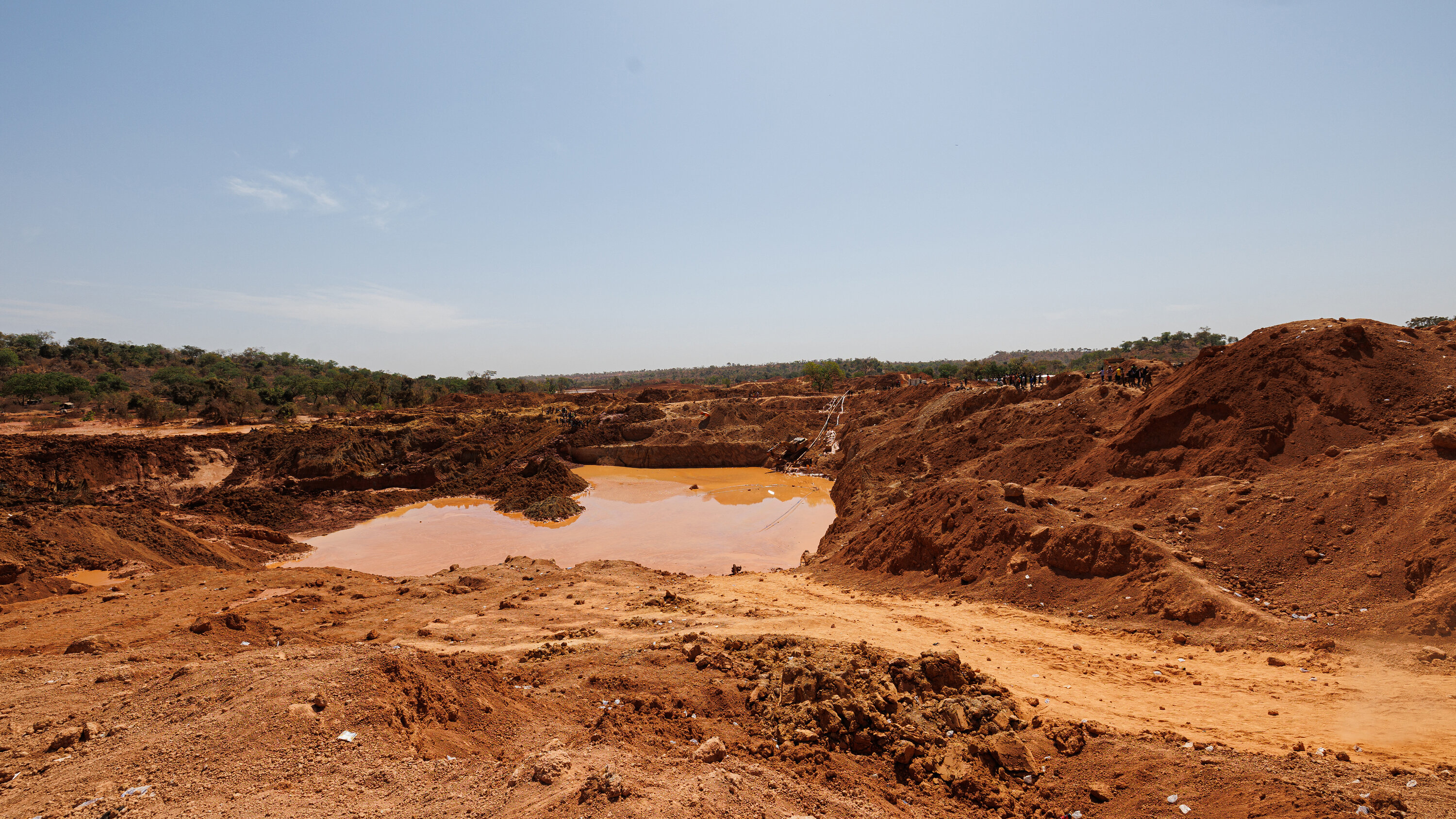Cities Under Siege: The Devastating Impact Of Climate Whiplash

Table of Contents
Infrastructure Under Strain
Climate whiplash puts immense strain on urban infrastructure, causing significant damage and escalating maintenance costs.
Damage to Critical Systems
Extreme weather swings – from record-breaking heatwaves to torrential downpours and devastating wildfires – severely damage critical infrastructure.
- Water infrastructure: Heatwaves can lead to water shortages and droughts, while intense rainfall can overwhelm drainage systems, causing flooding and contamination. The city of Cape Town, South Africa, faced severe water restrictions during a prolonged drought.
- Power grids: Wildfires can trigger power outages, affecting essential services and causing widespread disruption. California’s wildfires regularly cause extensive power grid failures.
- Transportation networks: Floods can damage roads, bridges, and railways, disrupting transportation and commerce. Hurricane Harvey’s impact on Houston's infrastructure serves as a stark example.
- Communication systems: Extreme weather events can damage communication towers and networks, hindering emergency response and public information dissemination. Puerto Rico's experience after Hurricane Maria highlights this vulnerability.
Repair costs following such events are astronomical. For instance, the estimated cost of repairing Hurricane Sandy’s damage in New York City exceeded $60 billion. These economic losses significantly impact city budgets and hinder economic recovery.
Increased Maintenance Costs
The frequency and intensity of extreme weather events are forcing cities to allocate increasingly larger portions of their budgets to infrastructure maintenance and upgrades.
- Many cities are investing in more resilient materials and designs for new infrastructure projects.
- However, securing long-term funding for these projects remains a significant challenge.
- The increasing likelihood of extreme weather events is also driving up insurance premiums for cities, adding further financial strain.
Public Health Crisis
Climate whiplash exacerbates existing public health challenges and creates new ones, particularly in densely populated urban areas.
Heat-Related Illnesses and Deaths
Extreme heatwaves are becoming more frequent and intense, leading to a surge in heatstroke cases and fatalities, especially among vulnerable populations like the elderly and the poor.
- The World Health Organization estimates that tens of thousands of deaths annually are attributable to heatwaves.
- Cities with inadequate cooling infrastructure and limited access to healthcare are particularly vulnerable.
- This increased burden on healthcare systems further strains already stretched resources.
Spread of Infectious Diseases
The unpredictable nature of climate whiplash creates ideal conditions for the spread of infectious diseases.
- Flooding can contaminate water sources, leading to outbreaks of waterborne diseases like cholera.
- Changes in temperature and rainfall patterns can expand the range of disease vectors like mosquitoes, increasing the risk of diseases like dengue fever and Zika virus.
- This poses a significant challenge to public health infrastructure and requires proactive prevention strategies.
Economic Disruption and Displacement
Climate whiplash significantly disrupts economic activity and forces population displacement, creating complex social and economic challenges.
Impact on Businesses and Tourism
Extreme weather events damage businesses, disrupt supply chains, and deter tourism, leading to significant economic downturns.
- Businesses can suffer irreparable damage from floods, fires, or strong winds, resulting in job losses and economic hardship.
- The tourism sector is particularly vulnerable, as extreme weather events can damage attractions and deter visitors.
- The cumulative effect of these disruptions can lead to long-term economic stagnation in affected cities.
Climate Migration and Displacement
As extreme weather events become more frequent and intense, increasing numbers of people are forced to relocate, creating strains on receiving cities.
- Coastal cities are particularly vulnerable to sea-level rise and storm surges, forcing residents to migrate inland.
- This climate migration places a strain on resources, housing, and infrastructure in receiving areas.
- The social and economic integration of climate migrants presents a significant challenge for urban planning and governance.
Mitigating the Impact of Climate Whiplash
Addressing the devastating impacts of climate whiplash requires a multi-pronged approach focusing on mitigation and adaptation strategies.
Investing in Climate-Resilient Infrastructure
Building climate-resilient infrastructure is crucial to reducing vulnerability to extreme weather events.
- This includes investing in green infrastructure, such as green roofs and permeable pavements, to manage stormwater runoff.
- Strengthening flood defenses and upgrading water and power grids are also essential steps.
- Sustainable urban planning is vital for creating resilient cities that can withstand extreme weather.
Strengthening Early Warning Systems
Improved weather forecasting and early warning systems are critical for enabling cities to prepare for and respond to extreme weather events.
- Investing in advanced meteorological technologies and effective communication strategies is key.
- Community preparedness programs should educate residents on how to respond during extreme weather events.
- This can minimize the impact of extreme weather on lives and property.
Global Collaboration and Policy Changes
Addressing climate change at its source is essential to mitigating the long-term impacts of climate whiplash.
- International cooperation and ambitious emission reduction targets are necessary.
- Implementing strong climate policies at the local, national, and international levels is crucial.
- Sustainable development goals should prioritize climate resilience and environmental protection.
Conclusion
Climate whiplash poses a significant threat to cities worldwide, causing widespread infrastructure damage, public health crises, and economic disruption. The cumulative impact of these challenges necessitates urgent action. Understanding the devastating effects of climate whiplash is the first step towards building more resilient cities. Learn more about local initiatives and advocate for change in your community to mitigate the impacts of climate whiplash and build a safer, more sustainable future.

Featured Posts
-
 Unclaimed E1 Million Lotto Jackpot Winners Location Revealed
May 28, 2025
Unclaimed E1 Million Lotto Jackpot Winners Location Revealed
May 28, 2025 -
 Nba Playoffs Mathurins Ejection Highlights Tense Game 4 Between Pacers And Cavs
May 28, 2025
Nba Playoffs Mathurins Ejection Highlights Tense Game 4 Between Pacers And Cavs
May 28, 2025 -
 Prakiraan Cuaca Besok 24 April 2024 Di Jawa Tengah Antisipasi Hujan Sore
May 28, 2025
Prakiraan Cuaca Besok 24 April 2024 Di Jawa Tengah Antisipasi Hujan Sore
May 28, 2025 -
 While Sinner Soared Alcaraz And Zverev Stalled
May 28, 2025
While Sinner Soared Alcaraz And Zverev Stalled
May 28, 2025 -
 Barrick Rejects Malis Gold Mine Nationalization Attempt Lack Of Legal Grounds
May 28, 2025
Barrick Rejects Malis Gold Mine Nationalization Attempt Lack Of Legal Grounds
May 28, 2025
